Research regarding multifaceted assessment for volcanic activities
Living with volcanoes by deeply knowing volcanoes.
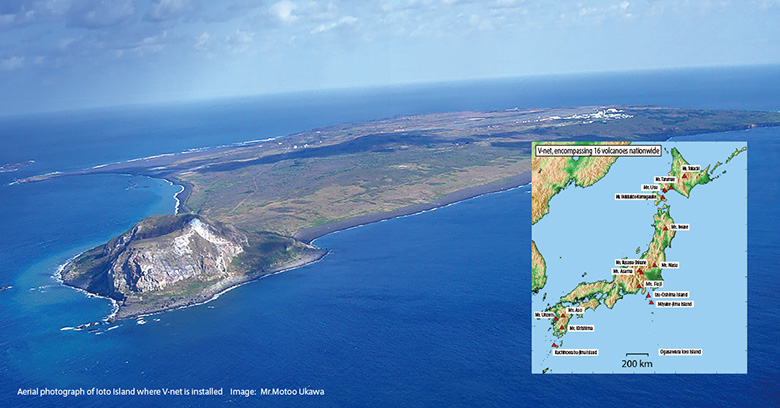
Volcanoes bestow various benefits such hot springs and a source of thermal energy, but once volcanoes erupt they are capable of causing major damage. Living with volcanoes relies heavily upon understanding them. Observation of volcanoes located around Japan is divided among the JMA, universities and research institutes. Since the 1980s, NIED has conducted observation on Mt.Fuji, Izu Oshima Island, Miyake-jima Island, Mt. Nasu, and Iwo-jima Island, and has operated the fundamental volcano observation network “V-net” which currently has 55 observation stations at 16 volcanoes. Under this project, we are utilizing this observational data to drive a multifaceted approach to research, aiming to elucidate the mechanisms behind volcanic phenomena and to predict and mitigate damage from volcano disasters.
Approach 1 | Imaging of subterranean magma transfer
Based on observation by V-net, remote sensing and geological investigation, we can capture how magma moves underground during an eruption.
-
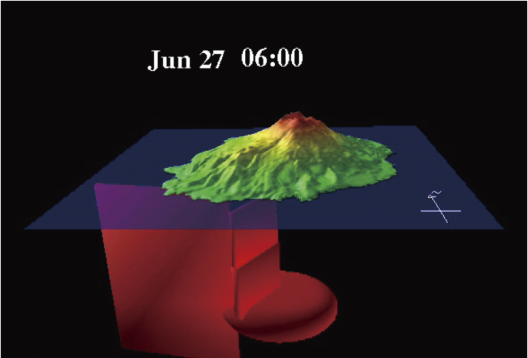
-
By investigating the change in the slope of the earth’s surface, we can estimate how the magma moved underground around the time of the eruption of Miyake-jima Island in 2000.
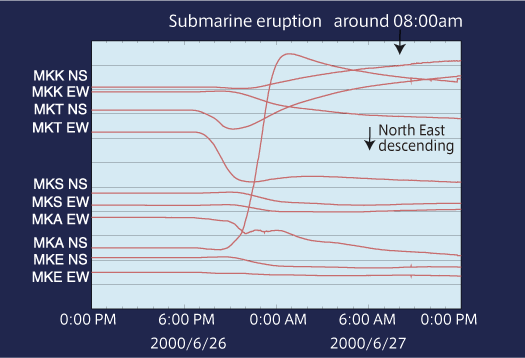
Approach 2 | Pre-event /real-time evaluation of volcano disasters
We are developing technology that can predict the type of disaster and its likelihood of occurrence by estimating the expected position and form of the eruption and the location use observation data from satellites and other measurement devices to estimate the position and form of a volcano will take. As well as locating cracks and craters in the volcano, this technology can.
-
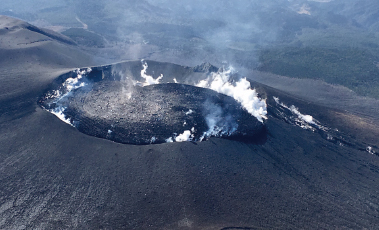
-
Satellite image (left) around crater taken during 2018 Shinmoedake eruption (top), and simulation of magma flow during the same eruption (bottom).
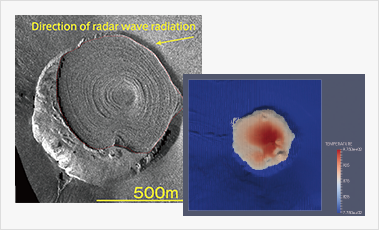
Approach 3 | Proposing Techniques for Volcano Disaster Countermeasures and Response
For damage caused by volcano disasters, we research what sort of countermeasures should be taken in advance, and develop measures for swiftly responding in the event of an eruption. For example, we are building a system for predicting how falling volcanic ash would impact upon urban infrastructure, based on materials from related institutions.
-
Volcanic ash damage simulation from the 2016 Mt.Aso Nakadake Eruption.
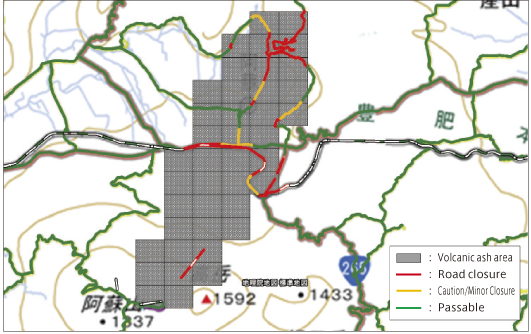
-
Simulation of volcanic ash damage due to Mt.Nasudake Eruption
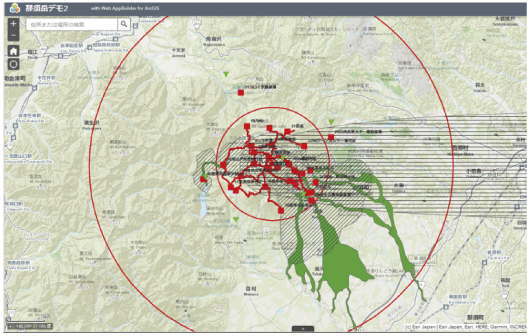
TOPICSElucidating the magma transfer process during the eruption of Shinmoedake (Mt. Kirishima)
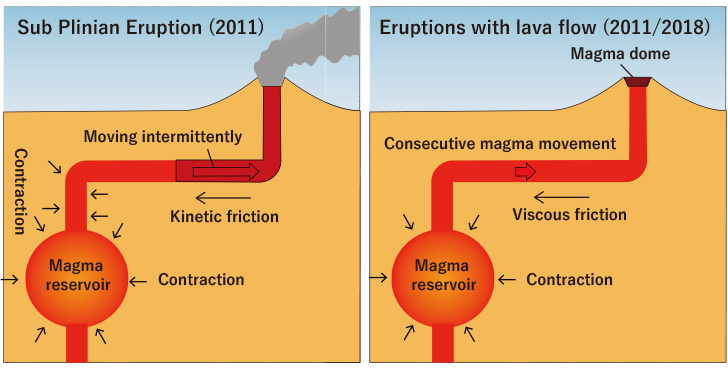
From observational data of Shinmoedake (Mr. Kirishima), which erupted in 2011 and 2018, we could confirm that the eruption was preceded by magma transferring intermittently throughout multiple eruptions. We could also identify that the manner of eruption changes in line with the friction characteristics in the magma’s path. Bringing clarity to this mechanism means that it may be possible to predict the pattern of the next eruption.
